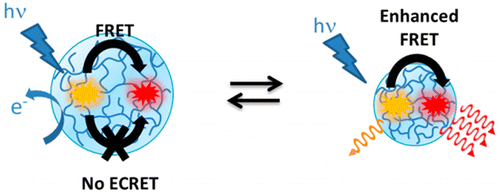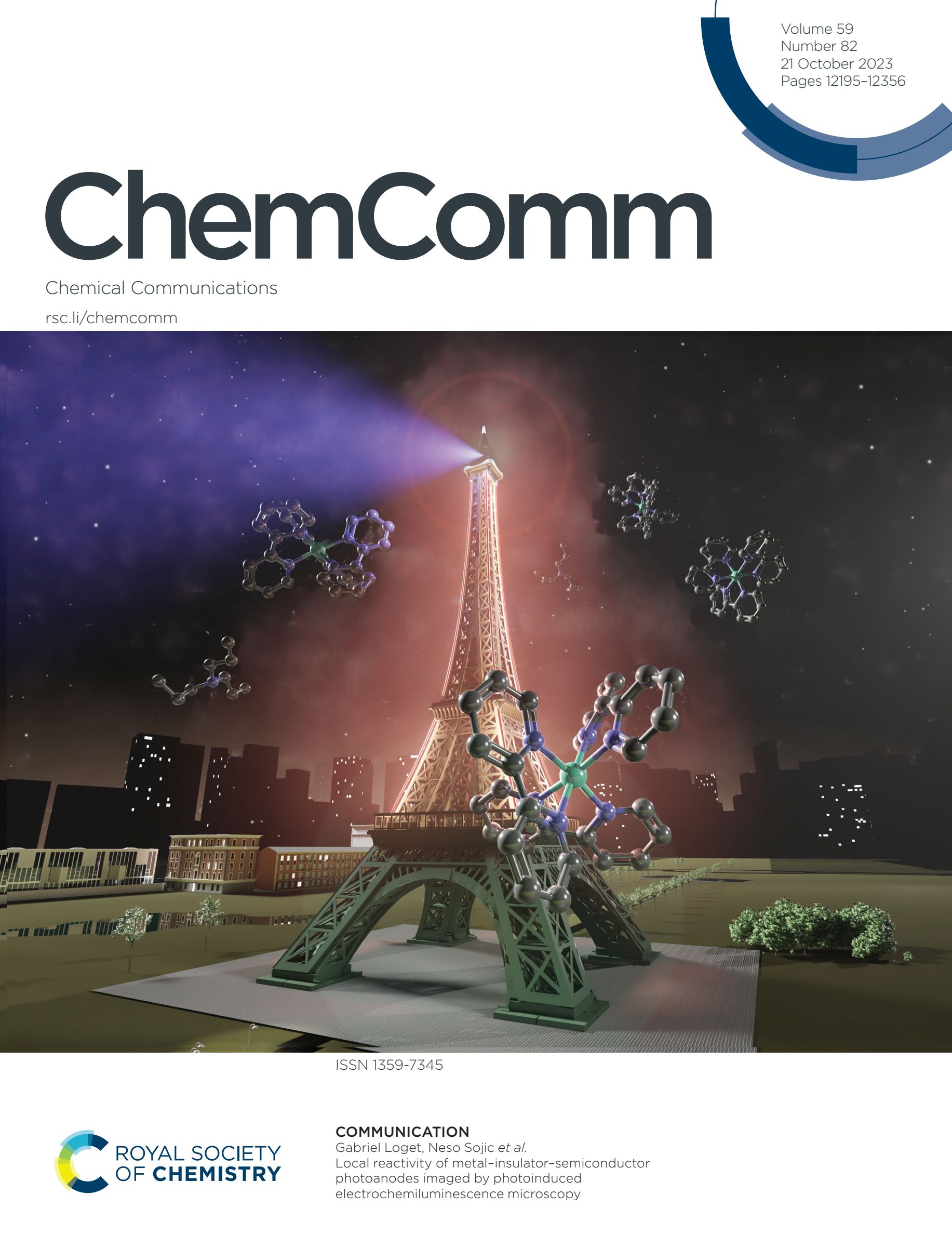Florent Pinaud, Romain Millereux, Pierre Vialar-Trarieux, Bogdan Catargi, Sandra Pinet, Isabelle Gosse, Neso Sojic, Valérie Ravaine
J. Phys. Chem. B, 2015, 119 (40), pp 12954–12961
Stimuli-responsive microgels with redox and luminescent resonance energy transfer (LRET) properties are reported. Poly(N-isopropylacrylamide) microgels are functionalized simultaneously with two models dyes: a derivative of tris(bipyridine) ruthenium complex and cyanine 5. Both moieties are chosen as a pair of luminophores with a spectral overlap for resonance energy transfer, where the ruthenium complex acts as a donor and the cyanine an acceptor. The effect of the temperature on the efficiency of the LRET of the microgels has been investigated and compared using either photoluminescence (PL) or electrochemiluminescence (ECL) as the excitation process. In PL, the synthesized microgels exhibit resonance energy transfer regardless of the swelling degree of the microgels. The transfer efficiency is a function of the donor–acceptor distance and can be tuned either by the swell–collapse phase transition or by the dye content in the microgel network. In ECL, the microgels emit light only at the wavelength of the ruthenium complex because the resonance energy transfer does not occur. Indeed, even within the microgel matrix, the cyanine dye is oxidized at the potential required for ECL generation, which impairs its emitting properties. Thus, both excitation channels (i.e., PL and ECL) show differential behavior for the resonance energy transfer processes.







